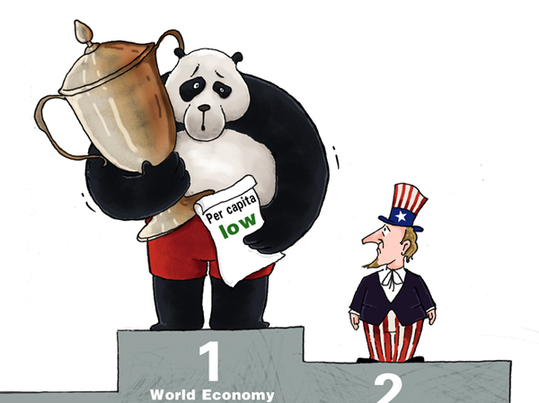China's changing pattern of FDI
- By John Ross
 0 Comment(s)
0 Comment(s) Print
Print E-mail China.org.cn, October 16, 2014
E-mail China.org.cn, October 16, 2014
|
|
|
A mixed story [By Zhai Haijun/China.org.cn] |
According to UN figures, inbound investment in China continues to be the highest for any developing economy at US$101 billion in 2013. But the pattern of investment in China is changing significantly as the country develops, and this trend will inevitably become more pronounced.
In the first decades after the start of China's economic reforms in 1978, inward fixed investment (FDI) was primarily undertaken by foreign companies to create a base for exports. Although this was helpful in China's early stage of "reform and opening up," the investment was frequently very low value added. For example, China received only 2 percent of worldwide wages paid for iPod production despite the fact that every iPod, at that time the world's most successful consumer product, was manufactured in China.
As recently as 2010, the majority of China's exports came from foreign-owned companies. Among large exporters, the role of foreign investment was even greater - of the top 200 exporting companies in 2009, 153 were foreign-funded.
Chinese-owned companies were dominant among small and medium size exporters, and for example, Alibaba's original success was creating the Internet systems that connect these Chinese companies to their foreign markets.
But as China's economy has developed, the reason for its attractiveness to foreign companies has radically changed. In comparative international terms, China is no longer a low-wage economy. On World Bank data, only 30 percent of the world's population now lives in countries with a higher per capita GDP than China, and wages will be approximately proportional to this. In Southeast Asia and South Asia, every developing country except Malaysia now has a lower per capita GDP than China.
For many exporters, China's unrivalled skill in major manufacturing fields has become the country's main attraction. A U.S. study, with the self-explanatory title "Why Apple builds iPhones (and everything else) in China," spells this out clearly. The New York Times posed the question, "What does China have that America lacks?" The conclusion was:
"Quite a lot. China has more mid-level engineers, a more flexible workforce, and gigantic factories that can ramp up production at the drop of a hat. China also offers tech firms a one-stop solution. 'The entire supply chain is in China now,' a former high-ranking Apple executive tells The Times. 'You need a thousand rubber gaskets? That's the factory next door. You need a million screws? That factory is a block away. You need that screw made a little bit different? It will take three hours.'"






